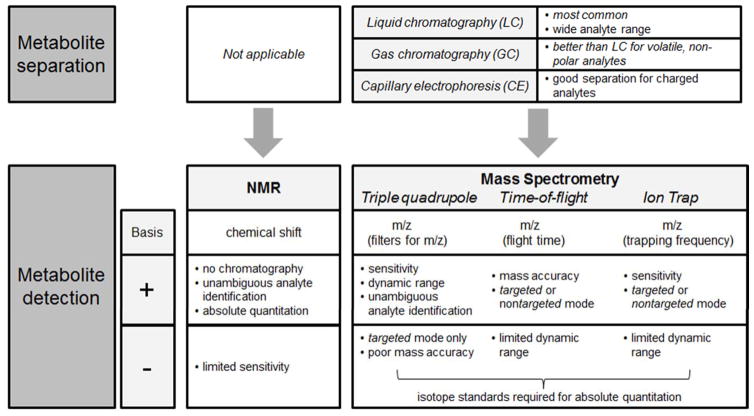Figure 1.
Overview of metabolomics methodologies. Nuclear magnetic resonance (NMR) is robust, requiring relatively little sample preparation and no chromatographic separation. However, because of limited sensitivity and high data complexity, unambiguous identification is typically limited to less than a hundred metabolites. Mass spectrometry (MS)-based approaches have higher sensitivity and rely on a combination of chromatographic separation and mass-to-charge ratio (m/z) resolution for metabolite identification. In MS-based platforms, triple quadrupole instruments are generally used for targeted analyses, in which approximately hundreds of metabolites of known identity are measured, whereas time-of-flight and ion trap instruments are often used for nontargeted analyses of approximately thousands of metabolite peaks (only a subset of which have assigned identities). Relative advantages (+) and disadvantages (−) of the different approaches are detailed in the figure.

